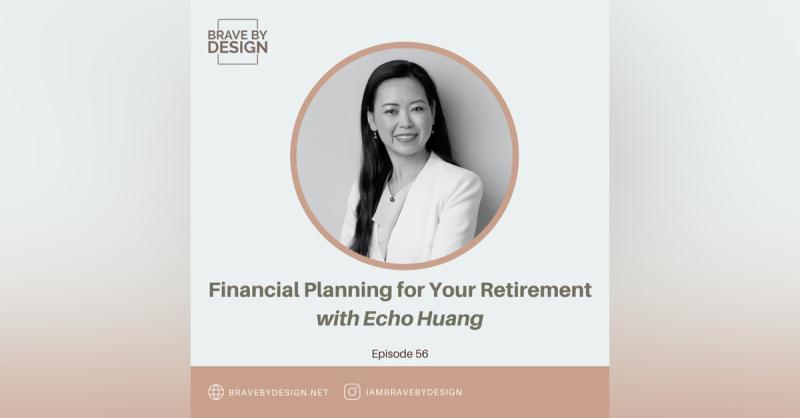What Don’t You Want to Deal With?
I know certain topics are hard to talk about. Let me help you face your fear of discussing a difficult element of your wealth management plan, Long-Term Care. In our last time together, I pulled you out from under the covers and introduced you to Long-Term Care, what it is, and the importance of planning early.
Today, we will finish up the subject by talking about the different types of plans and how they work.
Types of Long-Term Care
Although it’s difficult to predict how much or what type of care any one person might need, on average, someone age sixty-five today will need some form of long-term care for three years or more. This care will generally take the form of one of four services:
1. Care or assistance with activities of daily living at home from an unpaid caregiver who can be a family member or friend.
2. Services at home from a nurse, home health/home care aide, therapist, or homemaker.
3. Care in the community.
4. Care in a long-term facility.
While some people need long-term care in a facility for a relatively short period of time while they are recovering from a sudden illness or injury, someone who is disabled from a severe stroke, for example, may need long-term care services on an ongoing basis.
If a person’s needs can no longer be met at home, moving into a nursing home or other type of facility-based setting for care that is more extensive for supervision, may be the only option. This is often the case with dementia or Alzheimer’s.
The Cost of Care
The cost of long-term care in the United States is substantial. Unless you have a long-term-care insurance policy, you’ll find that existing medical coverage, Medicare, Medicare supplement, or an HMO will provide little if any coverage for long-term-care costs and most of the services you need will not be covered.
Many people are not aware that Medicare and/or disability coverage do not pay for most long-term-care services. Everyone is entitled to Medicare when they turn sixty-five if they have paid into Medicare/Social Security throughout their life. However, even with a Medicare supplemental plan, most of your long-term-care services will not be covered.
Medicaid covers the medical costs of low-income families and individuals. It’s the major source of financing for long-term care for the elderly and persons with disabilities, accounting for 42 percent of national spending on long-term care and almost 50 percent of spending on nursing home care.
Medicaid provides critical assistance to people with long-term-care needs in the community and nursing homes, covering services often excluded from Medicare and private insurance.
Unfortunately, to qualify for Medicaid, you need to have very limited financial resources.Ultimately, I have found that the best option to plan ahead for long-term care is to buy long-term-care insurance, especially if you are still relatively healthy and not too old.
How Long-Term-Care Insurance Works
Nursing homes emerged in the 1960s to provide long-term care outside the family. At the time, many people had no option but to sell their homes or deplete their savings to pay for this care. This gave rise to a need for an insurance plan to cover these costs.
By the late 1970s, long-term-care insurance was being offered across the country. Unfortunately, by the 2000s, it became clear that insurance providers had underestimated the rise in health care costs and the number of people who would need care and claim benefits. Many could not make a profit in this product line and decided not to offer long-term-care insurance products anymore.
Today, there are only a few insurance companies that offer long-term-care insurance. The two types of policies are: a traditional long-term care insurance policy and a hybrid long-term-care policy (life insurance with long-term-care benefits).
Traditional Long-Term-Care Policy
There are two types of traditional long-term care policies: reimbursement and indemnity.
When you buy a traditional reimbursement policy (for example, a monthly benefit of $5,000 for five years, for a total benefit of $300,000), the insurance company reimburses your long-term care expenses up to the benefit amount per month. If your expenses are $7,000 a month, the policy will still only reimburse you to the benefit maximum of $5,000 a month. With this policy, you can choose an inflation rider to receive a higher benefit amount.
While the reimbursement type of long-term care policies are cheaper, offer more variety, and are more readily available than an indemnity policy, the drawback is that you must incur qualified long-term care expenses in order to get reimbursed.
The indemnity policy pays cash, and you can decide how to spend it, such as hiring your daughter to take care of you at home. Generally, indemnity policies are at least 30 percent more expensive than reimbursement policies; therefore, you must compare and decide if getting paid in cash up to the benefit amount (when you cannot perform two or more daily living activities) is very important to you.
The major drawback of both traditional reimbursement and indemnity policies is that future premiums are uncertain. Insurance companies have increased the premiums in the past years and will increase the premiums if they apply and receive approval in your state.
Hybrid Long-Term-Care Policy
On August 17, 2006, President George W. Bush signed into law the Pension Protection Act of 2006, which contains a section that made federal law, particularly individual tax law, more hospitable to hybrid products involving long-term care insurance and annuities and life insurance. Tax-free exchanges are possible between annuities and life insurance. The tax-free transfers are called a “1035 Exchange.”
The hybrid long-term care insurance policies have gained popularity because insurance companies designed life insurance products with long-term care benefits and the insured can make a 1035 exchange to use the cash value of a life insurance policy to pay for this new hybrid life insurance with long-term care benefits without paying taxes on the gains inside the current policy.
An example of this hybrid policy: the widow, Lily, decided to use a portion of her portfolio to pay the hybrid policy’s single-pay premium of $104,000 for a policy that came with a death benefit of $120,000 and a total long-term-care benefit of $405,000. It included a ninety-day elimination period for a nursing home facility, assisted living facility, and facility hospice care, but no elimination period for home health care, care coordination, home modification, caregiving training, and adult day care center.
This policy structure translated into a long-term care payout of $6,000 monthly for six years. It had a 5 percent simple inflation rider so that the benefits would grow to $885,000 by age eighty, with monthly benefits of $11,250 at age eighty.
By investing $104,000 in her policy one payment at the age of fifty-five, the internal rate of return (IRR) on her long-term-care benefits at age eighty worked out to be 7.82 percent per year, tax free.
This hybrid product offers death benefits and long-term-care benefits that are both income-tax-free.
Too often, people work on their investment portfolio, college funds, their retirement plan, and their estate plan, but don’t plan for long-term care. They then find out that the substantial cost of this care exhausts their wealth and undermines a lifetime’s work. Don’t wait until it’s too late to start planning for your health and long-term care needs. You never know when you will need care.
We will be discussing charitable giving next time. We will look at the smiles both giving and receiving can produce.
What planning tasks might you be hiding from? Anyone brave enough to share with us below? I’d be very happy to help you face these tasks.













